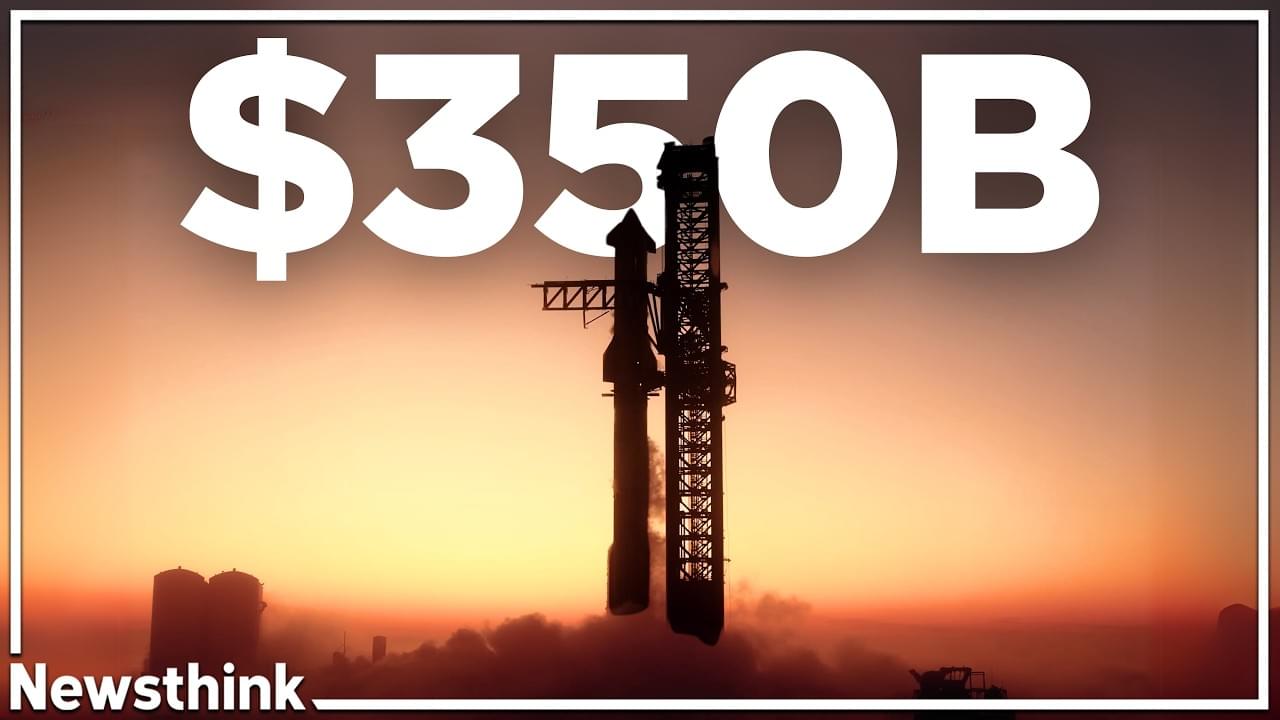Archive for the ‘Elon Musk’ category: Page 2
Jan 6, 2025
Bezos’s Blue Origin poised for first orbital launch next week
Posted by Kelvin Dafiaghor in categories: Elon Musk, space travel
Cape Canaveral (AFP) Jan 5, 2025 — Amazon founder Jeff Bezos’s company Blue Origin is poised to launch its first orbital rocket next week, marking a pivotal moment in the commercial space race currently dominated by Elon Musk’s SpaceX.
Jan 6, 2025
Why Elon Musk Sees 1 Million People on Mars by the 2040s
Posted by Kelvin Dafiaghor in categories: Elon Musk, space

The billionaire SpaceX CEO tasked scientists with designing domes and researching procreation with an eye toward colonizing the Red Planet.
Jan 2, 2025
How SpaceX Became the World’s Most Valuable Private Company
Posted by Chris Smedley in categories: business, Elon Musk, internet, space travel

How Elon Musk turned failure into $350 billion. Use code NEWSTHINK at http://nordpass.com/newsthink to get a FREE 3-month NordPass Business trial. No credit card required.
I highly recommend Walter Isaacson’s biography of Elon Musk: https://www.amazon.com/Elon-Musk-Walt?tag=lifeboatfound-20…
Continue reading “How SpaceX Became the World’s Most Valuable Private Company” »
Jan 1, 2025
How Neuralink Will Break Reality
Posted by Shailesh Prasad in categories: Elon Musk, space, sustainability

Last video: The 2025 Boring Company Update Is Here!
► Support the channel by becoming a member: https://www.youtube.com/channel/UCJjAIBWeY022ZNj_Cp_6wAw/join.
►The Tesla Space Merch Store Is Live! Shop our newest release while quantities last: https://shop.theteslaspace.com/
► Patreon: https://www.patreon.com/theteslaspace.
► Join Our Discord Server: https://discord.gg/zfMNSnuRQN
► Subscribe to our other channel, The Space Race: https://www.youtube.com/channel/UCeMcDx6-rOq_RlKSPehk2tQ
► Subscribe to The Tesla Space newsletter: https://www.theteslaspace.com.
► Use my referral link to purchase a Tesla product and get up to $1,300 off and other exclusive benefits. https://ts.la/trevor61038
Jan 1, 2025
Ex OpenAI Researcher REVEALS What AGI Will Be Like, New Humanoids And More
Posted by Kelvin Dafiaghor in categories: biotech/medical, business, Elon Musk, robotics/AI

Join my AI Academy — https://www.skool.com/postagiprepardness.
🐤 Follow Me on Twitter
https://twitter.com/TheAiGrid.
🌐 Checkout My website — https://theaigrid.com/
Continue reading “Ex OpenAI Researcher REVEALS What AGI Will Be Like, New Humanoids And More” »
Dec 30, 2024
Elon Musk has done it: iPhones and Android smartphones can now use his satellites to make calls anywhere on Earth
Posted by Genevieve Klien in categories: Elon Musk, mobile phones, satellites
After revolutionizing global internet access, Elon Musk’s Starlink is poised to take smartphone connectivity to the next level. The ambitious satellite service will soon enable users to make calls from virtually anywhere on the planet, all without the need for specialized hardware.
Starlink, a division of SpaceX, has announced its plans to introduce Direct-to-Cell, a groundbreaking feature that uses its vast satellite network to allow voice calls on regular smartphones. What sets this apart is its simplicity—there’s no need for modifications to your device. As long as your phone is LTE-compatible, you’re ready to connect.
This innovation could fundamentally change how we think about mobile communication. Imagine being able to make calls from the remotest corners of the Earth—whether you’re deep in a rainforest, sailing in the middle of the ocean, or trekking across deserts—with no cell towers in sight. Starlink’s satellite system makes this scenario entirely possible.
Dec 27, 2024
Quantum computers in space? Google’s CEO and Elon Musk are planning a revolution
Posted by Genevieve Klien in categories: Elon Musk, quantum physics, space travel, supercomputing
The future of technology often feels like science fiction, and a recent conversation between Sundar Pichai, CEO of Google, and Elon Musk of SpaceX proved just that. With Google unveiling its groundbreaking quantum chip Willow, a bold idea was floated—launching quantum computers into space. This visionary concept could not only transform quantum computing but also push the boundaries of modern science as we know it.
Quantum computing has long promised to solve problems far beyond the reach of traditional computers, and Google’s Willow chip seems to be delivering on that vision. In a recent demonstration, the chip completed a complex calculation in just five minutes—a task that would take classical supercomputers billions of years.
Google’s researchers describe this milestone as exceeding the known scales of physics, potentially unlocking groundbreaking possibilities in scientific research and technological development. But despite its promise, the field of quantum computing faces significant challenges.
Dec 26, 2024
XAI Valuation Reaches Over $40 Billion After $6 Billion Funding Round
Posted by Bruce Burke in categories: Elon Musk, robotics/AI
This ultrathin device safely delivers gene therapies to the inner ear, offering hope for hearing restoration.
Elon Musk’s xAI announced Monday it raised $6 billion in a Series C funding round, putting the company’s value at more than $40 billion as it continues to strengthen its AI products and infrastructure.
Dec 22, 2024
ASUS chairman: we are working on a humanoid robot, will fight Elon Musk’s Tesla Optimus robot
Posted by Shailesh Prasad in categories: Elon Musk, robotics/AI
ASUS chairman Jonney Shih said the development of its first humanoid robot is already underway, wouldn’t be the first robot: ASUS has its Zenbo already.













